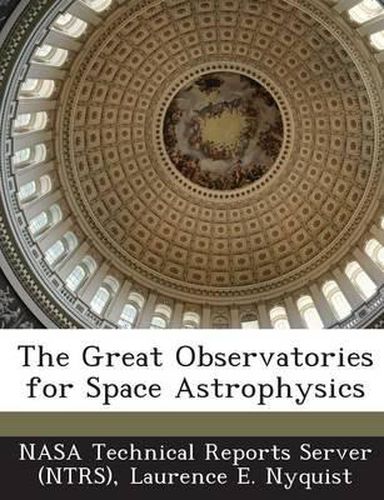Readings Newsletter
Become a Readings Member to make your shopping experience even easier.
Sign in or sign up for free!
You’re not far away from qualifying for FREE standard shipping within Australia
You’ve qualified for FREE standard shipping within Australia
The cart is loading…






The nation’s strategy for astrophysics research during the rest of this century and into the next is a coordinated, multispectral examination of the universe. NASA plans to launch a family of large orbital observatories, each tuned to a different part of the electromagnetic spectrum. They are as follows: the Gamma Ray Observatory (GRO); the Advanced X Ray Astrophysics Facility (AXAF); the Hubble Space Telescope (HST); and the Space Infrared Telescope Facility (SIRTF). To complement these sensitive space telescopes, a powerful new radio observatory system is envisioned: the Very Long Baseline Array (VLBA), an intercontinental network of radio telescopes, working with radio observatories in space to perform orbiting very long baseline interferometry (OVLBI). Observing the universe across the spectrum requires different kinds of telescopes based on quite different techniques of detection. An optical telescope has little in common with a gamma ray detector; they do not look alike, nor do they operate on the same principles. No single telescope can answer all the questions or make all the discoveries that await.
$9.00 standard shipping within Australia
FREE standard shipping within Australia for orders over $100.00
Express & International shipping calculated at checkout
The nation’s strategy for astrophysics research during the rest of this century and into the next is a coordinated, multispectral examination of the universe. NASA plans to launch a family of large orbital observatories, each tuned to a different part of the electromagnetic spectrum. They are as follows: the Gamma Ray Observatory (GRO); the Advanced X Ray Astrophysics Facility (AXAF); the Hubble Space Telescope (HST); and the Space Infrared Telescope Facility (SIRTF). To complement these sensitive space telescopes, a powerful new radio observatory system is envisioned: the Very Long Baseline Array (VLBA), an intercontinental network of radio telescopes, working with radio observatories in space to perform orbiting very long baseline interferometry (OVLBI). Observing the universe across the spectrum requires different kinds of telescopes based on quite different techniques of detection. An optical telescope has little in common with a gamma ray detector; they do not look alike, nor do they operate on the same principles. No single telescope can answer all the questions or make all the discoveries that await.